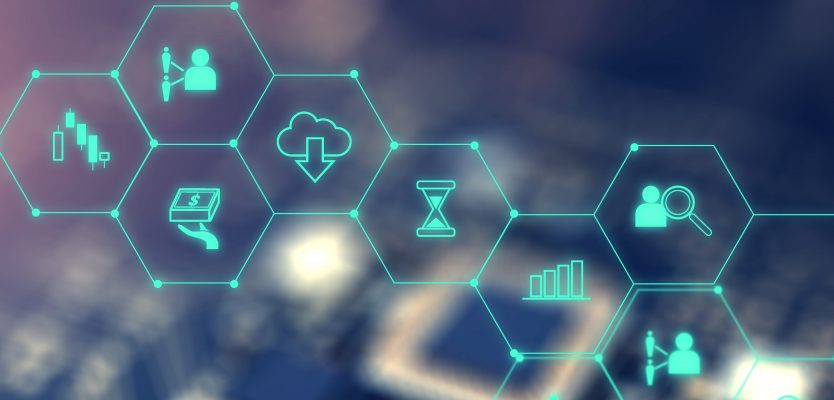This article is an excerpt from GovLoop’s recent guide, “5 Cloud Trends to Watch in Government.” Download the full guide here.
It used to be that artificial intelligence was the stuff of sci-fi films and that sensors let you pass through automated doors. Cloud is changing that. It enables practical use cases of emerging technologies by providing the storage and computing capacity, flexibility and price points that other platforms have lacked. Tech such as machine learning, language processing and the Internet of Things are going from virtual reality – which cloud also supports, by the way – to actual reality.
Benefits from cloud-supported technologies, such as IoT and AI, are getting attention. For example, the United States could see labor productivity increase by 35 percent by 2035 because of AI, an Accenture report found. For government agencies looking to harness the momentum of emerging tech, there’s help. For example, the General Services Administration’s Emerging Citizen Technology Office launched its Artificial Intelligence for Citizen Services program in 2016, and last year, the National Institute of Standards and Technology released a draft revision of its Special Publication 800-53 to account for the Internet of Things.
See it in action at the federal level:
The Defense Department spent $7.4 billion in fiscal 2017 on cloud computing and AI, up 32 percent from 2012, according to a Govini report. The reason for the increased investment? To make AI and autonomous systems the cornerstone of DoD’s Third Offset Strategy, a plan to use technology to outmaneuver adversaries in future warfighting missions.
“Rapid advances in Artificial Intelligence (AI) — and the vastly improved autonomous systems and operations they will enable — are pointing towards new and more novel warfighting applications involving human-machine collaboration and combat teaming,” Robert Work, former Deputy Secretary of Defense, wrote in the report. “These new applications will be the primary drivers of an emerging military-technical revolution. The U.S. military can either lead the coming revolution, or fall victim to it.”
The report breaks AI into three segments: learning and intelligence, advanced computing and AI systems. Within the first, natural language processing grew the most, at 16.8 percent, and quantum computing jumped by the same amount in the second segment.
About a third – 33 percent – of the total 2017 spending went to AI, but “before AI can be applied at scale, DoD must transition to the Cloud,” the report states.
See it in action at the state level:
Cloud fuels many services that the Utah Department of Transportation provides. Most recently, UDOT helped develop the Connected Transportation Cloud, which lets officials see how data about the department’s health and performance stacks up against business goals. The solution connects data silos into one dashboard that teams can access and share. It lets users, such as Utah, map strategic goals to indicators that they can measure continuously. They can also visualize budgets, including payroll and capital projects in addition to revenue sources.
The department’s three main business objectives are eliminating fatalities, preserving transportation infrastructure and optimizing mobility through “Keep Utah Moving.” The state uses private cloud services to pull together vehicle accident data for crash mapping in order to monitor problems and tweak the transportation system, said Dave Fletcher, the state’s Chief Technology Officer.
“That’s the key thing with cloud services: It increases our flexibility, where we’re not focused so much on infrastructure and platform development, but more focused on achieving results and making use of the data,” Fletcher said.
UDOT has been using a cloud-based data portal called UPlan to track all assets, maintenance planning, projects, traffic and safety since about 2009.
But the separate Connected Transportation Cloud will “provide clear metrics on basically everything that the Utah Department of Transportation does,” he said. “I would say that UPlan is a little more operational and that Transportation Cloud is more strategic. UPlan includes data on all of the transportation assets that UDOT possesses, while Transportation Cloud tracks performance of those assets and relates that performance to strategic objectives, while also providing predictive capabilities.”
Looking ahead, data is the future, UDOT Executive Director Carlos Braceras said in a 2016 presentation. To connect the data that will come from cars, traffic lights and stripes on the road, with the department, UDOT will rely on cloud.
“Cloud is not a goal in and of itself for us,” Fletcher said. “It’s just a facilitator that enables us to do things quicker and integrate new or more useful technologies quicker.”
Next Steps:
- Start small with something that will draw attention and wins. For instance, automate menial tasks so that employees can focus on more creative, mission-critical ones. Automation could save almost 100 million hours a year for federal workers, so a small difference can go a long way, especially toward getting support from managers who can help push bigger projects later.
- Assess where cloud can ease pain points for government workers and the public alike. For example, Los Angeles uses smart parking meters with IoT that tells people where spots are open and when their meter is going to expire. For the city, revenues from parking have increased 2.5 percent.
- Don’t let funding deter you. Look for partnerships with industry and nonprofit organizations, apply for grants and build on existing infrastructure where possible.





Leave a Reply
You must be logged in to post a comment.